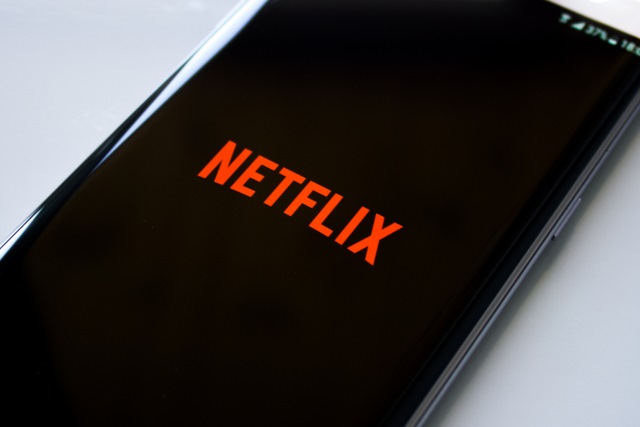
The secret to mobile security: Isolation
As if avoiding phishing, fake phone calls, and questionable emails wasn’t already a daily challenge to protecting personal data, "trustworthy" websites are now effective vehicles for launching malware, and no device is safe. In today’s digital world, the security of the internet has become a tricky task, especially considering nearly half of the world’s most popular websites are risky places to visit.
Consider this: the web browser serves as one of the primary conduits for delivering malware, so how can organizations protect their assets and users? Taking extreme measures, some enterprises have entertained the idea of using tablets or iPads to keep high-risk users safe from malware. But given the recent iPhone and iOS hacks, mobile devices have proven to be just as susceptible to attacks. For instance, Google's Project Zero security team recently revealed that iOS security was breached after websites in the wild had found a number of vulnerabilities. Not only were they able to break through layers of security, hackers were able to take full control of the device.

What are cyber threats?
A cyber threat is basically any type of threat that is computer related in nature. To be clear, a computer could be a desktop computer, a laptop, a tablet or even a smartphone. All of these devices have particular types of threats that they can be exposed to that users need to be aware of to ensure that they can protect themselves and their confidential information.
Given the number of different types of devices that can be exposed to cyber threats, there are a number of different types of issues that can present themselves. Each of these threats is unique in its own right and poses a different type of issue for the user, but typically they all have the same end result… the impacted system is somehow compromised and the user, or the user’s information, is placed at risk. While the list below is extensive, it is not all inclusive. There are far too many types of threats out in the wild of the Internet to list in one article. What I do hope to do is to list those that are most prevalent and give the reader a good overview of what the threat is and how it is often used to do damage to both home and corporate networks.

6 benefits of self-service marketing
The most successful distributed brand managers know that local marketing is a necessary part of a national and global marketing strategy, as consumers look for a personalized and tailored experience that is relevant to their needs and specific to their location. Organizations are looking towards self-service marketing to streamline processes for local teams and facilitate local efforts at the corporate level.
When done right, local marketing offers an excellent return on investment. In 2017, Google found that businesses made $2 in revenue from every $1 invested in local advertising through AdWords and retailers advertising locally on Facebook achieved an average ROI of 152 percent. However, deploying a local marketing strategy across the distributed network can be challenging for corporate marketing teams. To maximize the chances of local marketing success, local marketers need to carry their weight. That's where self-service marketing comes in to play.

Lessons learnt from over a decade of Hadoop
Back in 2006 Apache Hadoop emerged and soon began to revolutionize the nascent world of big Data. It’s one of the key factors that helped shape a new industry and -- with the cloud -- helped drive a raft of new consumer industries and business services.
But the data lakes of Hadoop became a challenge to manage, and many Big Data and analytical projects became more of a quagmire than a sparkling lake of truth. What’s more the number compute engines overpopulated. They were operationally complex and demanded specialized skills to maintain. Those data lakes became very disparate compute engines, sharing the same storage whilst they operated disparate workloads. It became a mess. Managing them with the tools available was no picnic.

From security awareness to security enablement: A new era of cyber
Security leaders have every reason to worry about the evolving threat landscape. As cyber threats proliferate (ranging from HTTP phishing to state-sponsored ransomware), the cyber talent and skills gap only grows wider.
As if this weren’t enough to keep CISOs and CIOs up at night, IT and security teams are less confident than ever in their organizations’ abilities to defend against the latest cyber attacks. Research shows at least 80 percent of IT, security, and other professionals don’t feel adequately prepared to defend their organizations. And at least 68 percent doubt their organizations’ readiness to thwart advanced threats.

Online anonymity is a lie: Research challenges privacy protection frameworks
Online privacy and anonymity seem farther away from our reach than ever. It is almost as if every new advancement and progress in technology further removes another brick from an already flimsy wall of privacy on the web.
Although legislations such as GDPR were designed to protect user privacy and anonymity, these guarantees hold little weight against powerful technologies like machine learning which -- researchers have found -- can piece together anonymized information to form your complete identity.

Now is the time to embrace Just-in-Time learning
End user adoption of enterprise software, such as the highly prevalent Office 365, should be a top priority for any IT organization. However, it can sometimes be hard to achieve max adoption through the use of traditional training or eLearning methods alone, which take employees away from their daily tasks for lengthy education sessions. Instead, companies could benefit from implementing tools and policies capable of providing "Just-in-Time Learning" (JITL) that provide workers with answers to their technology questions within their normal workflow. JITL addresses the performance and training needs of the modern technology-focused workplace and the stringent, on-demand information requirements of a rising millennial workforce.
Staying on top of training can be arduous, especially when we consider worldwide spending on information technology is expected to reach near-$4 trillion by the end of 2019 (Gartner). That’s a lot of new tech for employees to learn and leverage, just to get their jobs done. What’s more is that traditional training methods can quickly monopolize annual budgets. In fact, average training expenditures for large companies increased from $17 million in 2017 to $19.7 million in 2018 alone.

Avoiding expense overpayments in the NHS
With increasing innovation and investment in technology, the UK's National Health Service, the NHS, is currently in the throes of real digital transformation. The move to a paperless NHS is one part of the process that has been well documented but so have the doubts about when it will happen. While many industry voices agree that the NHS needs to cut out the paper, drive efficiencies and harness digital technology, there is a lack of consensus around when this will be achieved -- estimations vary from 2020 to 2027.
However, it’s important to put this into context. As the nation’s single biggest employer, with 1.7 million workers across the UK, the NHS is the fifth-largest workforce in the world. With this size and scale comes a myriad of processes which all need to be automated and digitized, especially for back office functions such as HR and payroll.

Netflix phishing tops all other attacks on streaming services
With nearly 151 million users worldwide, Netflix is the #1 streaming service in the world. It also has the distinction of being the most impersonated by hackers. For cybercriminals, Netflix phishing is a lucrative business. While other streaming services, including HBO NOW and Spotify, are also on the receiving end of phishing attacks, none comes close to Netflix.
Netflix’s 155 million subscriber base offers a lucrative supply of personal information, contributing to its favorability with phishers. In Vade Secure's quarterly Phisher’s Favorites report for Q2 2019, Netflix was the 4th most impersonated brand in phishing attacks, with 8.2 percent quarter-over-quarter growth in Q2 2019.

Google turns 21: How two Stanford University whiz kids accidentally built a tech empire
Google is everywhere. It's behind the world's most popular mobile operating system and map, one of the most successful email services ever, and has even expanded into the finance, wearables and transport sectors. What's more, it probably still serves as your browser home page (or just a means of finding out whether you're connected to the Internet or not).
The still-relatively-young company, which turns 21 today, has come a hell of a long way since its inception in the late 90s, and looks well capable of dominating each and every avenue it decides to enter. However, the company had very humble, and indeed slightly odd, beginnings.

How the new sharing economy has changed consumer behavior
We currently live in a Digital Age, which, unlike a couple of decades ago, gives us the ability to leverage one another, like never before, as resources for support in just a few clicks or taps. Nowadays, we congregate online to do so many important things, none more important than sharing our precious resources. Whether we're setting up a ride on Lyft or booking a room on Airbnb, we, as consumers, are putting our trust in the fact that we will get great service and a fair deal, even when we are dealing with people we do not know. It's a fascinating time when what used to quaintly be called "stranger danger" has rapidly given way to consumers learning to trust complete strangers to provide everything from reliable transportation, to comfortable lodging, to transparency into how donations are being used.
The aforementioned companies are now, probably much to our parents’ disdain, household names. And with this kind of brand familiarity comes an implicit sense of trust. We know that if our Lyft driver fails to show, there is a company we can contact to complain about it. We also know that if our Airbnb host doesn’t provide clean accommodations upon arrival, we can go complain on Yelp. Every day, each of the crowdfunding, crowdsharing, and crowdsourcing companies that we're becoming increasingly reliant upon, in turn, relies on one important thing to make sure their business is running as well as it ought to be: consumer feedback.

3 must-do tasks to make vulnerability management useful in today's environments
I recently heard an executive describe how his team essentially threw its vulnerability report in the trash every time they received one. This seemed a bit extreme, but he informed a group of conference attendees that it wasn’t because the vulnerability reports didn’t contain important information -- it was because they have become so overwhelming.
Vulnerability management vendors today are routinely scanning for more than 100,000 vulnerabilities. Imagine the strain that places on an organization if even only a fraction of these vulnerabilities are found within their network. Then consider the feeling associated with the knowledge that there is no possible way to address them all in an effective time frame that will ensure that you are not at risk.

Exchange 2010 end of support: How IT pros can leverage Microsoft’s impending deadline into new business
For businesses that still rely on Microsoft Exchange 2010, the time to upgrade is now.
That’s because on Oct. 13, 2020, Microsoft will discontinue support for Exchange 2010. This end-of-support deadline raises a host of potentially disastrous implications for organizations still using this software. There will be no more technical assistance from Microsoft regarding documentation, phone support or general troubleshooting. There will be no more updates for bug fixes or security patches to protect users and data within Exchange 2010, increasing the risk of ransomware and malicious cyberattacks. Finally, running outdated or unsupported software poses risk for being out of compliance, which can present legal issues for certain businesses depending on their industry’s regulation standards.

Cross-Site Request Forgery: How to protect your app from CSRF attacks
The rise of cyber-attacks in the last few years is stunning. The list of targeted organizations includes big name retailers like Macy’s, social sites like Twitter, banks, hospitals, utility companies, governments, military installations… no organization is exempt from this growing threat.
It’s a massive -- and expensive -- problem to fix. The cyber security market is predicted to grow from $150 billion in 2018 to $250 billion by 2023, to help protect apps and businesses from these risks. One of the most common, yet potentially highly dangerous, risks is known as Cross-Site Request Forgery or CSRF.

5G has arrived: What you now need to know
5G, the latest in mobile technology, strives to make mobile communication better and faster than ever before. However, a challenge 5G has that its predecessors did not, is the amount of devices, not just mobile phones, looking to benefit from the new technology. From smartwatches to internet-connected doorbells to even impending autonomous trucks, each of these devices will be looking to connect to the 5G network.
5G is already in use by several cities across the US with other countries not far behind. In fact, a recently released Ericcson Mobility Report predicted that by the end of 2024, there will be 1.9 billion 5G subscriptions, 35 percent of traffic will be carried by 5G networks and up to 65 percent of the global population could be covered by the technology. So the current questions are not when or what, but who will have access and how secure is it?

